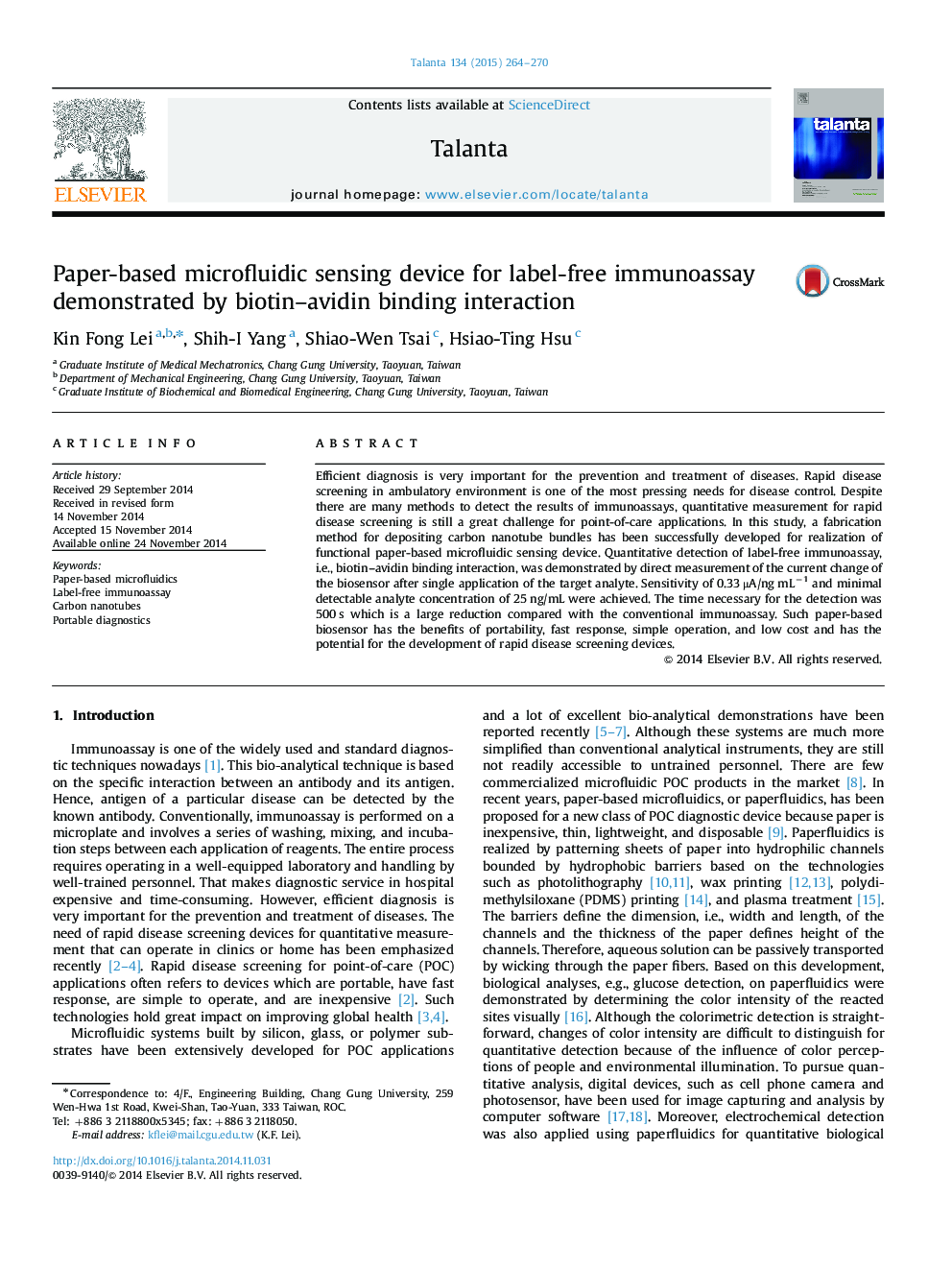| Article ID | Journal | Published Year | Pages | File Type |
|---|---|---|---|---|
| 1244077 | Talanta | 2015 | 7 Pages |
•A paper-based microfluidic sensing device for label-free immunoassay is proposed.•A fabrication method for depositing carbon nanotube bundles on paper has been developed for realization of functional sensor.•The sensor has been examined by physical, electrical, and chemical characterization.•Quantitative detection of label-free immunoassay was demonstrated after single application of the target analyte.
Efficient diagnosis is very important for the prevention and treatment of diseases. Rapid disease screening in ambulatory environment is one of the most pressing needs for disease control. Despite there are many methods to detect the results of immunoassays, quantitative measurement for rapid disease screening is still a great challenge for point-of-care applications. In this study, a fabrication method for depositing carbon nanotube bundles has been successfully developed for realization of functional paper-based microfluidic sensing device. Quantitative detection of label-free immunoassay, i.e., biotin–avidin binding interaction, was demonstrated by direct measurement of the current change of the biosensor after single application of the target analyte. Sensitivity of 0.33 μA/ng mL−1 and minimal detectable analyte concentration of 25 ng/mL were achieved. The time necessary for the detection was 500 s which is a large reduction compared with the conventional immunoassay. Such paper-based biosensor has the benefits of portability, fast response, simple operation, and low cost and has the potential for the development of rapid disease screening devices.
Graphical abstractFigure optionsDownload full-size imageDownload as PowerPoint slide
